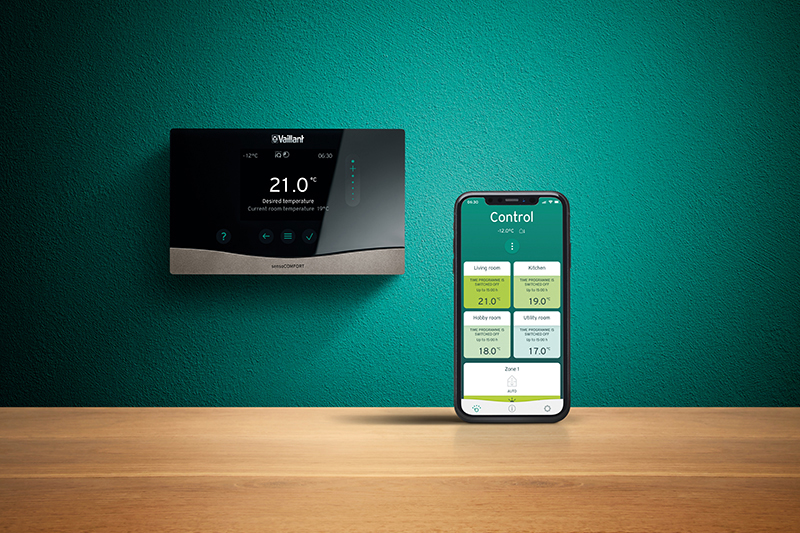
Developed in response to both consumer and installer feedback, Vaillant’s senso range of controls offer increased connectivity, a smart modern design and are easy to use and install, as Steve Keeton, Training and Technologies Director at Vaillant explains.
The sensoHOME and sensoCOMFORT are the latest range of controls from Vaillant and have been designed to make installers’ lives easier through guided commissioning, using the in-built eBUS connection.
eBUS is the language used by Vaillant products so they can ‘talk’ to each other. It is this intelligent communication that allows Vaillant boilers to carry out more complex decisions rather than just turning on and off. For example, eBUS allows the sensoHOME to constantly monitor room temperature. As the target temperature in the room approaches, it tells the boiler to modulate to a lower system temperature so that the target room temperature is not exceeded. Using this process – known as load compensation – the boiler is more frequently kept at lower temperature and in full condensing mode, therefore enabling the boiler to run at its most efficient point. Controlling the system in this precise way also allows homeowners to lower their energy consumption, carbon footprint and energy bills.
The sensoCOMFORT model features load compensation and weather compensation as standard. When installed with an outdoor weather sensor, it can also implement these technologies to deliver energy, carbon and cost savings for the user. If a customer wishes to have total control of the heating system at home and on the go via Vaillant’s sensoAPP, and want increased visibility of energy usage to help reduce energy wastage using sensoHOME, both can be achieved by pairing the control with the sensoNET (VR 921) internet gateway.
The sensoHOME is available as wired or wireless. The wired version can support two zones with the VR 66/2 wiring centre and additional VR 92 remote control. The sensoHOME RF only supports one zone.
Installation guide
This step-by-step guide outlines how to install a sensoHOME VRT 380F – a wireless model – and link it to any Vaillant boiler using the eBUS connection, for a property with one heating zone.
Step 1
Remove the cable attached to the receiver. You won’t need this as it’s for Vaillant boilers coming onto the market in the future. You’ll then need to get a level wire, at 0.75mm, and crimp it at both ends.
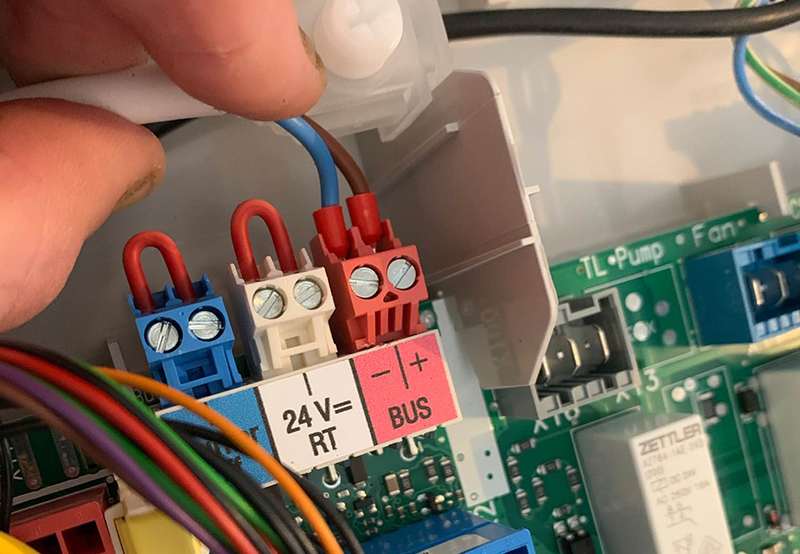
Step 2
Open the panel at the bottom of the Vaillant boiler. Put two ends into the BUS connection in the boiler, and the other two ends into the BUS connection in the receiver. Clip the cover back onto the receiver and close the panel of the boiler.
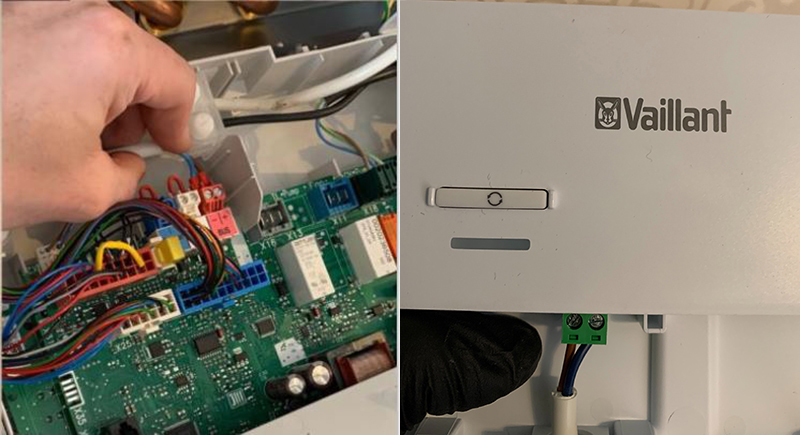
Step 3
With the supplied screws and wall plugs, identify a location for the receiver to be placed. Once the screws are in place (60mm apart) then the receiver can be mounted.
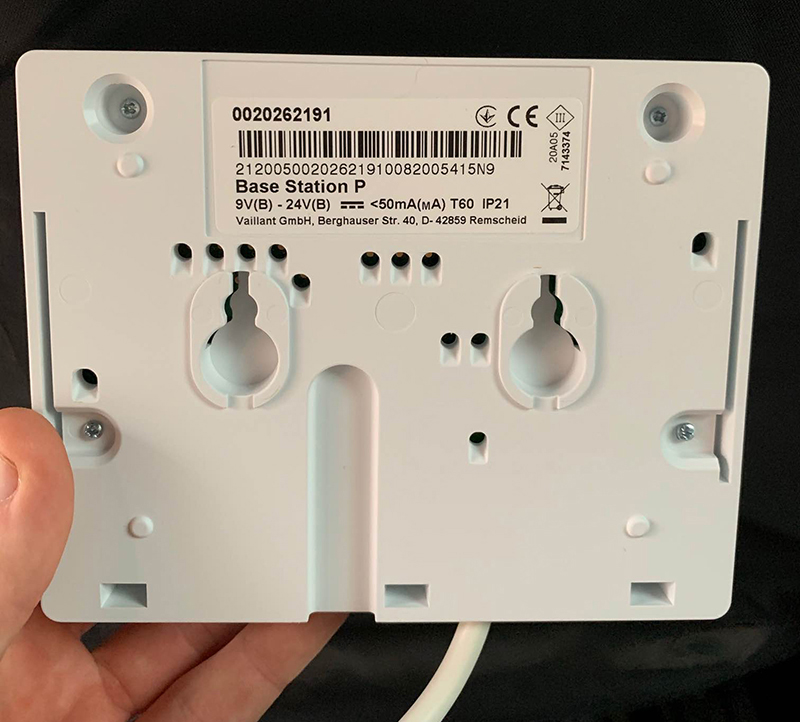
Step 4
The receiver is now set up. Turn it on, and then turn on the boiler. The control interface will now light up.
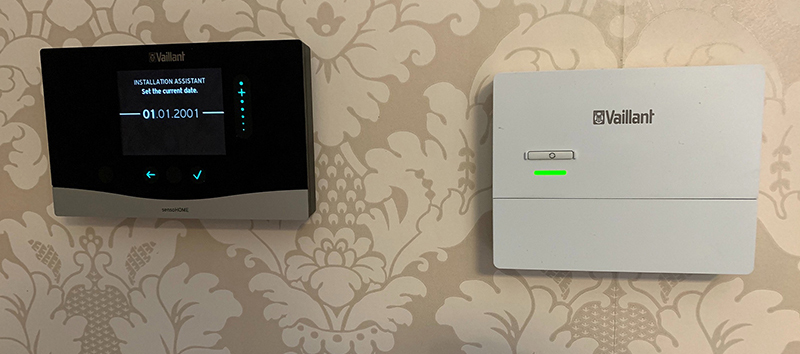
Step 5
Using Vaillant’s eBUS communication protocol, the sensoHOME automatically scans and looks for other Vaillant components that use this language. This means it will automatically communicate and synchronise with the Vaillant boiler. All you’ll need to do now is to follow the simple on-screen instructions to set up the date, time and language. The control also comes with a hanging bracket and screws so that it can be wall-mounted.

Step 6
Now that you’ve set up the new sensoHOME control, it’s time for your customers to learn how to use it using the on-screen wizard with step-by-step instructions. The on-screen prompts will also take them through setting up a heating schedule by asking a few simple questions, such as what time they’d like to heating to turn on / off and whether they are at home in the daytime on weekdays or weekends.
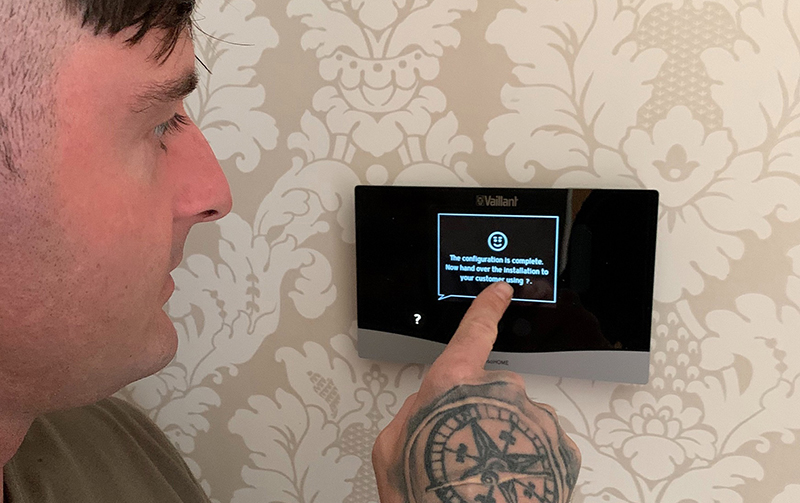
Step 7
The sensoHOME controls also allows the installer to input their contact information so if there was a fault or a service required on the heating system, a notification will be shown and details of the installer will be available to get any issues resolved. You can input the service date and your contact information by going into the menu followed by ‘settings’.
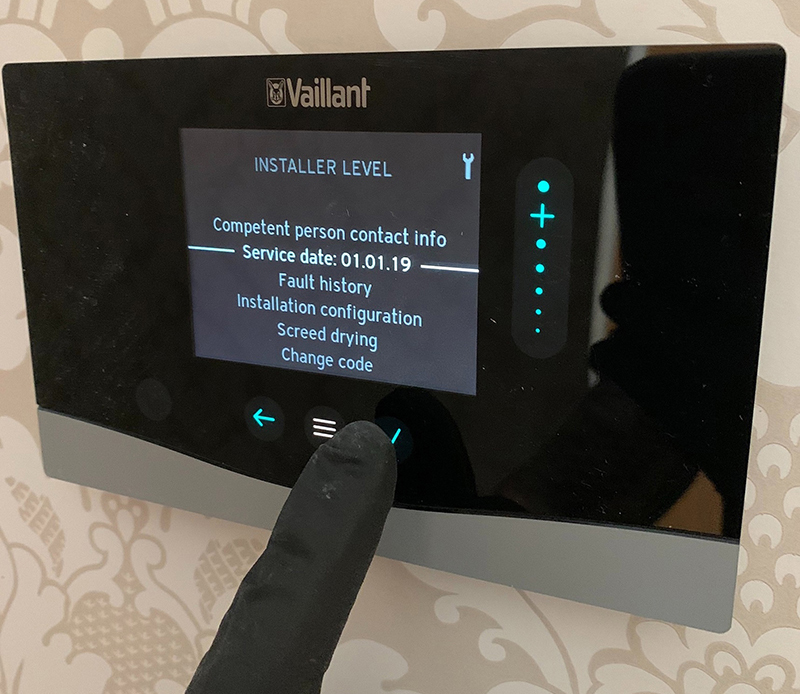
The installer’s view
John Wood has been installing a number of the sensoHOME VRT 380F controls: “The receiver is really easy to wire up, and setting up the control is straightforward. It uses the eBUS communication protocol to scan the entire system for other Vaillant components, so it automatically links up with the Vaillant boiler.
“It takes you through step-by-step and tells you what to do, which is great for both installers and the homeowner. I really like the feature where you hand it over to customer and it goes through how to use the controls. It saves the installer having to explain, and the touchscreen makes it very simple to follow the prompts.
“It’s sleek, stylish, and feels like a premium product. It comes with a 10 year guarantee when fitted with a Vaillant boiler, which is a lot longer than other cheaper controls. That gives customers a solid reassurance that they have a high-quality control. And because it operates on the eBUS protocol, it links seamlessly with the Vaillant boiler.
“All in all, its ease of use makes it one of the best controls out here in the market at the moment.”














